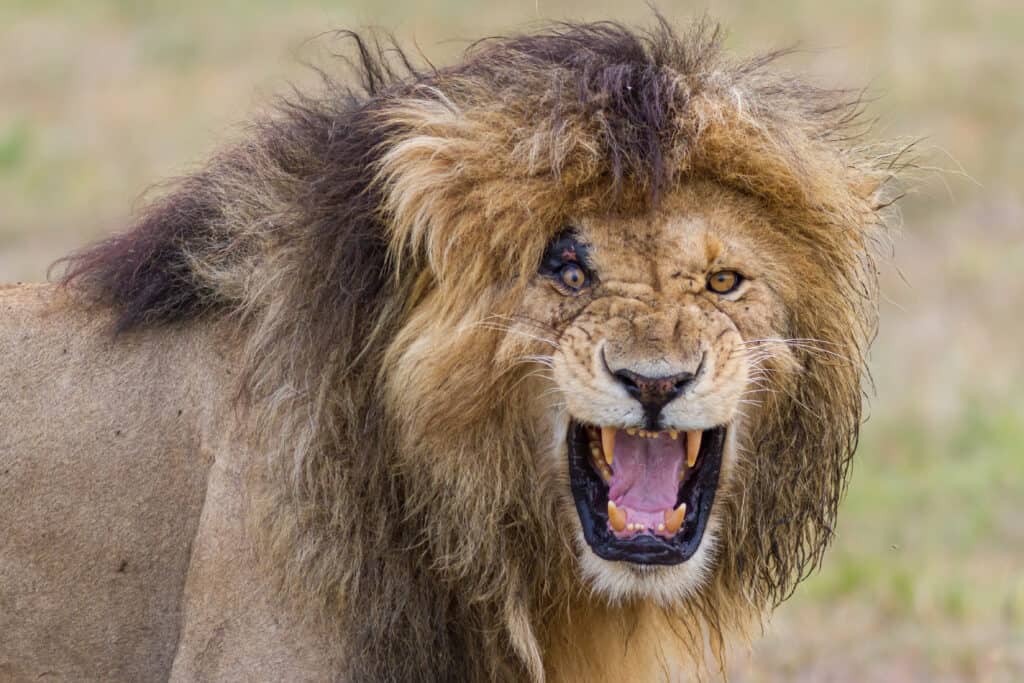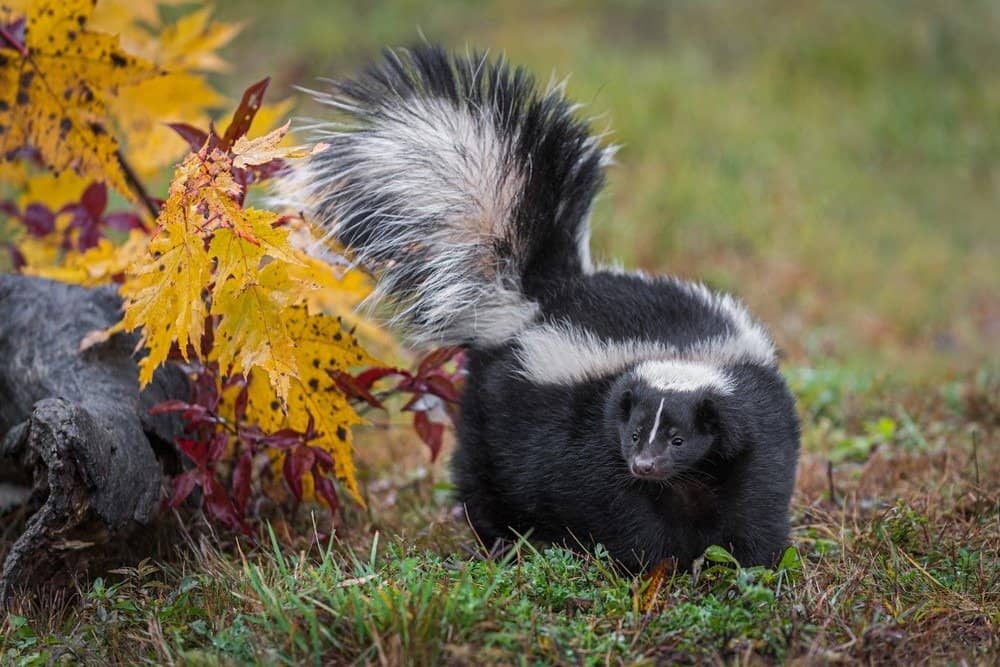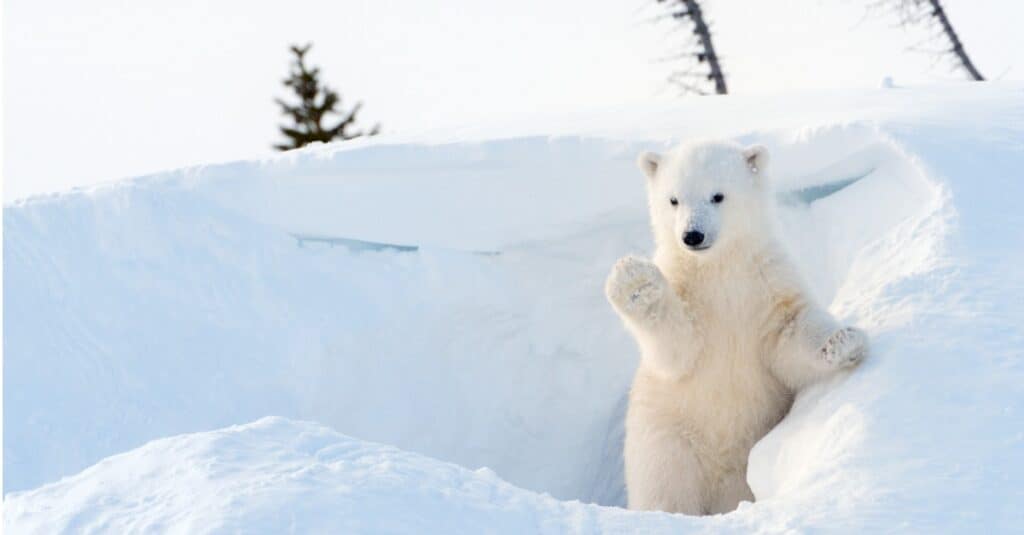A carnivore is a meat eater. It’s an organism that gets nutrition from eating other organisms. Carnivores can be hunters or scavengers.
Summary
Carnivores are a significant part of the food web. The food web is a description of what different animal species eat in the wild. Mammalian carnivores are in the family, Carnivora, which means “flesh devourers” in Latin.
How to Pronounce Carnivore
The word carnivore is pronounced as [Kaar | Nuh | Vor].

Lions are notorious carnivores that eat large animals like zebras.
©PatP66/Shutterstock.com
How Does the Food Web Work?
Animals must eat other living organisms, including plants and other animals to survive. There are three nutritional levels in the food web. These include:
- First level: Producers, also known as autotrophs, are organisms that produce their own food, such as plants and algae. These organisms typically use photosynthesis to make food.
- Second level: Consumers are animals that eat producers. This category contains three levels. These levels are carnivores, omnivores (animals that eat both plants and animals), and herbivores (primary consumers that eat plants, algae, and other consumers.)
- Third level: Detritivores and decomposers. Detrivores are scavengers that eat nonliving plants and animal remains. Decomposers, like fungi and bacteria, turn organic wastes from living organisms into inorganic materials, such as soil.
Carnivores are consumers in the food web. Some carnivores eat only meat, while others supplement their diets with plants. Read on to learn about the three different types of carnivores.
#1 Obligate Carnivores or Hypercarnivores
Obligate carnivores must eat meat for survival. Also called hypercarnivores, animal meat makes up at least 70% of their diets. Their digestive systems are not able to properly break down plant-based foods, or plants do not provide enough nutrients.
All types of cats are obligate carnivores. From house cats to lions, they need a high protein, low carbohydrate diet, which they obtain from eating other animals.
Most carnivores are not obligate carnivores, and get some of their food from plant sources.
#2 Mesocarnivore
Mesocarnivores depend on at least 50% animal meat in their diets. The other half comes from vegetation. Some examples of mesocarnivores include foxes, coyotes, skunks, and otters.
Mesocarnivores are small to medium-sized carnivores. They tend to be nocturnal, hunting their prey at night. How much meat they eat depends on the availability of their prey. They can supplement their nutrition from plant sources.

Skunks are mesocarnivores. That means they have a diet that consists of equal parts meat and plants.
©Geoffrey Kuchera/Shutterstock.com
#3 Hypocarnivores
Hypocarnivores consume meat for only 30% or less of their diets. Hypocarnivores are also considered omnivores. Many species of bears are hypocarnivores. Bears eat berries, nuts, and other vegetation, in addition to consuming fish and meat.
Tertiary Consumers
Tertiary consumers are carnivores that eat other carnivores. Also called apex predators, they are at the top of the food chain and are not preyed upon by other animals. Their diets can include only meat, or they may rely on plants as well.
Some examples of tertiary consumers include:
- Big cats such as lions, leopards, and tigers eat herbivores, such as zebras. However, they also may prey on other carnivores, such as hyenas, foxes, and crocodiles.
- Killer whales, also called orcas, hunt other predators, such as sea lions and seals.
- Polar bears eat other meat eaters, including penguins and seals.

Polar bears are tertiary consumers. That means they are carnivores that eat other carnivores.
©iStock.com/AndreAnita
Carnivorous Plants and Fungi
Plants and fungi can be carnivores as well. Carnivorous plants obtain nutrients by capturing and digesting small insects, frogs, and small mammals. The Venus flytrap, for example, traps insects inside of hinged leaves that snap shut when the unsuspecting insect walks across the leaf, triggering tiny hairs.
Carnivore Traits
Although there are many different species of carnivores, many of them share some similar traits. Most carnivores have sharp teeth to catch and eat prey. They have simple digestive systems, unlike plant eaters, which have specialized digestive systems for digesting plants.
Fun Fact: The largest animal on the planet is a carnivore. The blue whale can grow 100 feet long and weigh 200 tons. It feeds on krill, which are tiny crustaceans. Because blue whales are so large, they eat a lot of krill, up to 4 tons per day!
The Importance of Carnivores in the Ecosystem
The proper balance of producers, consumers, and decomposers is critical to any ecosystem. Carnivores are important to keeping the population of herbivores under control. And scavengers, like vultures, help ecosystems remain healthy by preventing diseases from spreading when they eat the remains of dead animals.
When the population of carnivores declines, it can lead to an overpopulation of herbivores. For example, in the northeastern United States, white-tail deer have become overabundant. One of the reasons is that the wolves and mountain lions that used to prey on the deer population have been eliminated. The overpopulation of deer in this region creates many problems. Some of the biggest issues are:
- Deer-vehicle collisions
- Crops and landscaping plants being eaten by deer
- An increase in tick-born illnesses carried by deer



